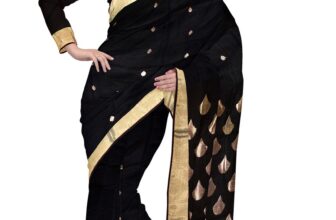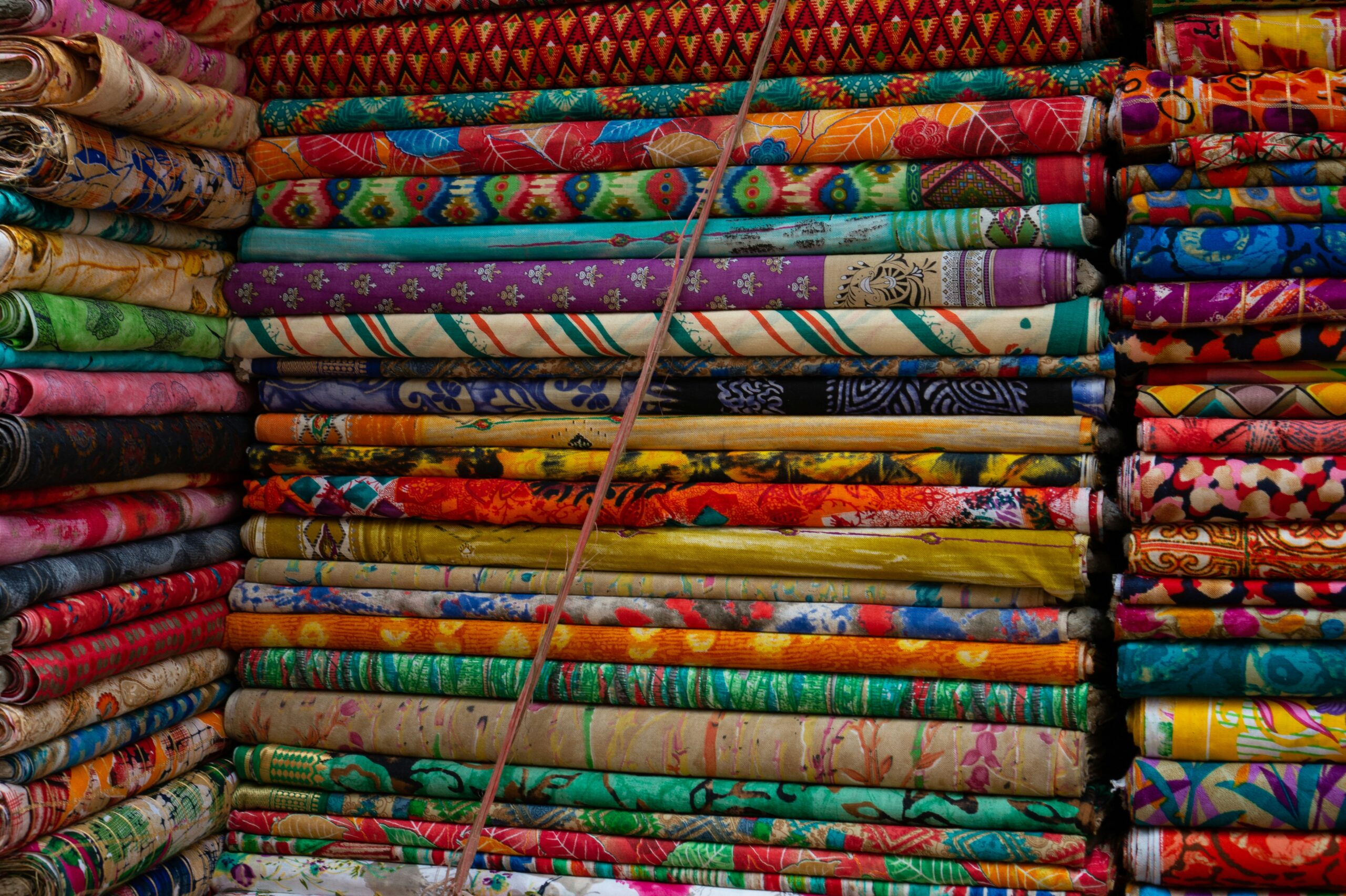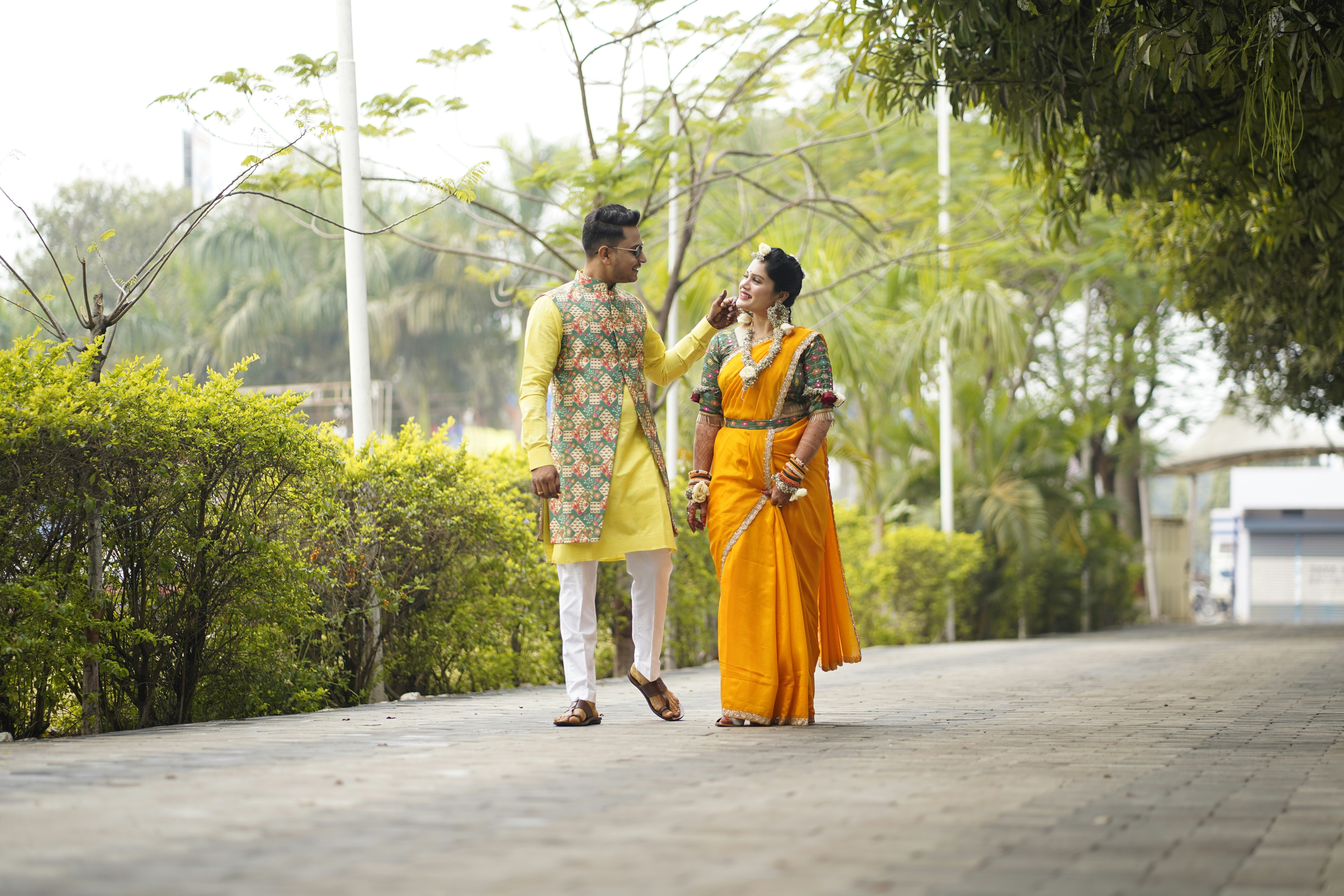Front hand mehndi designs have long been an integral part of Diwali celebrations. Diwali, the festival of lights, is not just about illuminating homes but also adorning oneself. Mehndi, or henna, plays a significant role in this adornment. Front hand mehndi designs, in particular, are cherished for their elegance and cultural significance.
1. Traditional Peacock Mehndi Design:
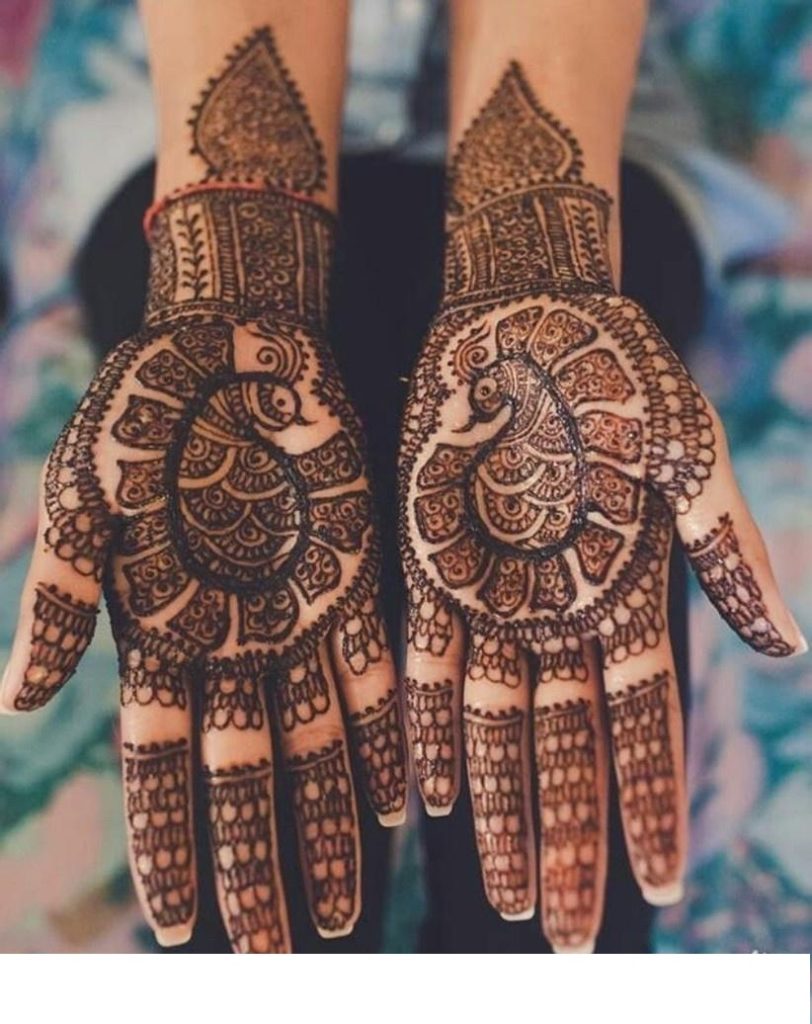
image credit weddingwire.in
The traditional peacock design is a classic motif in Indian and Southeast Asian cultures, particularly in mehndi (henna) art. This intricate design typically features a beautifully detailed peacock, a symbol of grace and beauty in many cultures. The peacock’s fan-like tail feathers are often the focal point, adorned with intricate patterns and swirls. The body of the peacock is equally detailed, with swirls, dots, and paisley motifs.
The peacock design holds cultural significance and is often used during weddings and festivals. It symbolizes love, beauty, and the celebration of life’s vibrant moments. The incorporation of this design into mehndi involves the skilled application of henna paste on the skin, resulting in a temporary tattoo that can last for a few weeks.
2. Floral Vine Pattern Mehndi Design:

image credit postoast.com
The floral vine pattern is a common theme in Mehndi and other forms of decorative art. This design features delicate, curving vines adorned with various floral elements like flowers, leaves, and buds. The vines often wind and loop around the skin, creating an elegant and natural look.
This pattern’s beauty lies in its versatility; it can be as simple or as intricate as desired. Smaller floral vine designs are popular for casual occasions, while larger and more complex versions are chosen for special events like weddings. It complements various mehndi styles, from traditional Indian to Arabic designs.
3. Intricate Paisley Motifs:
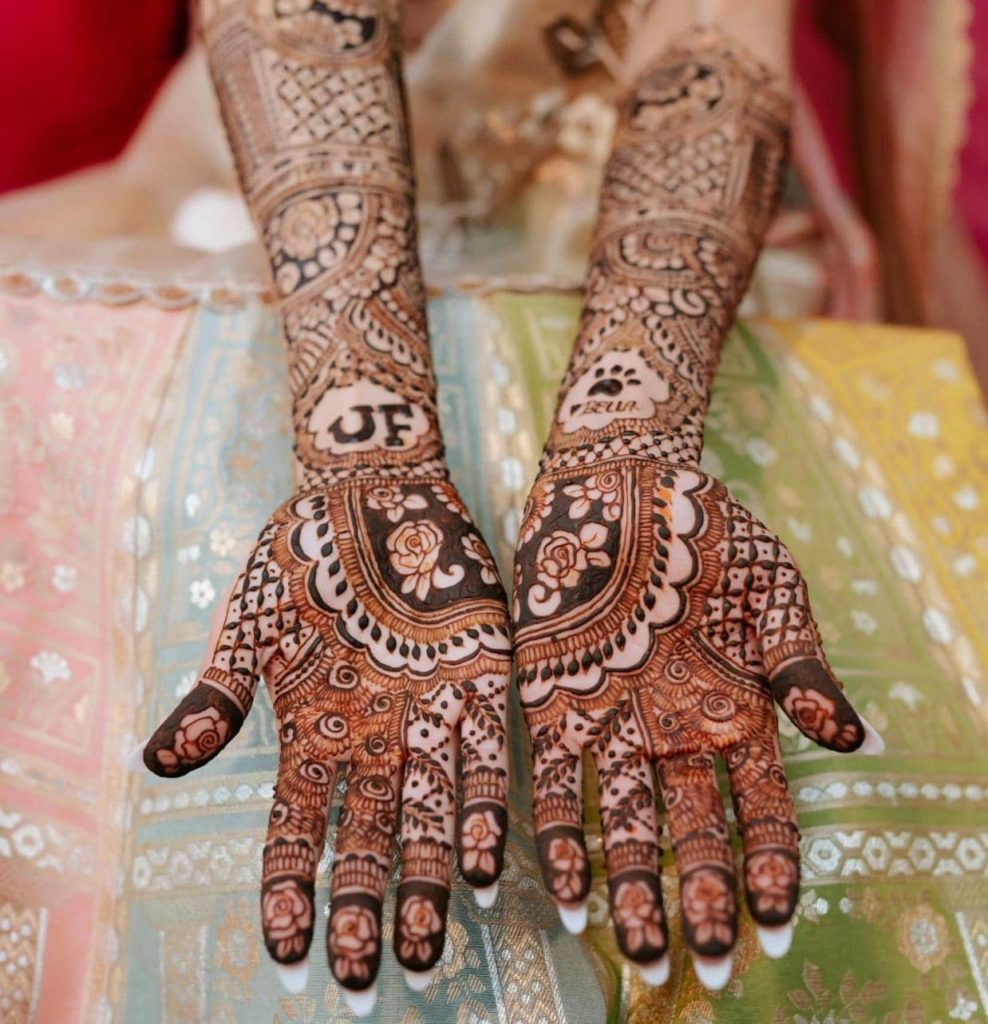
image credit getethnic.com
Intricate paisley motifs are a hallmark of Mehndi artistry, deeply rooted in South Asian culture. The paisley, also known as the “buta” or “mango” in local dialects, is a droplet-shaped design with a rich history. These motifs are characterized by their elaborate and finely detailed patterns, often featuring curving lines, dots, and geometric shapes.
Paisley motifs symbolize fertility, life, and eternity in many cultures. They are versatile and can be integrated into various mehndi styles, from traditional to contemporary. These motifs can be scattered across the hands and feet or arranged into more structured and elaborate compositions.
4. Arabic Mehndi with Geometric Elements:

image credit stylex.vn
Arabic mehndi is a distinct style known for its bold, flowing lines and minimalistic design elements. When combined with geometric elements, it creates a unique and eye-catching mehndi pattern. Geometric shapes such as triangles, squares, and diamonds are often incorporated into Arabic mehndi to add structure and symmetry to the design.
The beauty of Arabic mehndi with geometric elements lies in its simplicity and elegance. These designs typically feature open spaces, allowing the skin to show through, creating a striking contrast between the henna and the natural skin color. Geometric elements are often used to frame other intricate patterns, like floral or paisley motifs.
5. Radial Mandala Mehndi Design:

image credit weddingwire.in
The radial mandala design is a captivating and symmetrical mehndi pattern inspired by the spiritual and artistic traditions of India. “Mandala” means “circle” in Sanskrit, and these designs typically start from a central point and radiate outward in intricate, symmetrical patterns.
The radial mandala design symbolizes unity, balance, and the universe’s harmony in Hindu and Buddhist cultures. Its concentric circles and geometric shapes create a sense of balance and interconnectedness.
6. Rajasthani Elephant Motif:
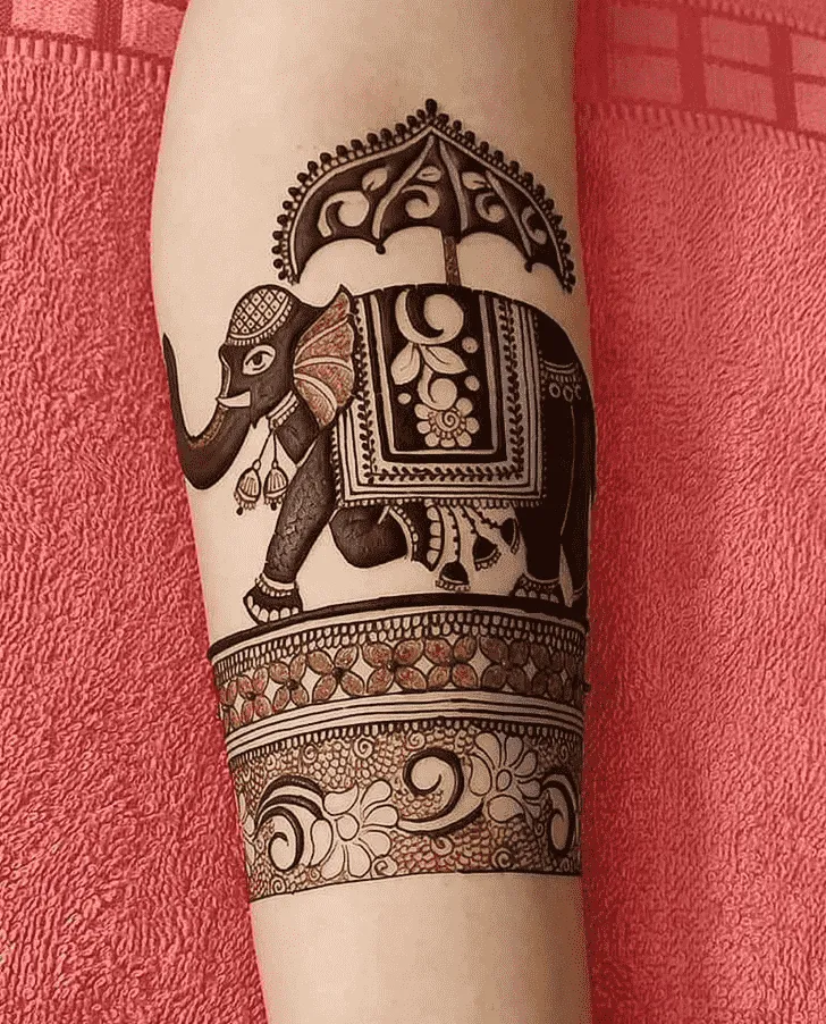
image credit in.pinterest.com
The Rajasthani Elephant Motif is a distinctive design element rooted in the culture and heritage of Rajasthan, a northwestern state in India. This motif often features intricately decorated elephants adorned with colorful fabrics, jewelry, and decorative accessories. Elephants hold deep cultural significance in Rajasthan, symbolizing both power and grace. They are commonly associated with royal processions and celebrations.
These motifs are frequently used in various art forms, including textiles, jewelry, and architecture. The intricate detailing of these motifs showcases the craftsmanship and artistic skills of the region. They are also a symbol of hospitality and warmth in Rajasthani culture, making them a popular choice in home decor and invitations for weddings and special occasions.
7. Minimalistic Lotus Pattern Mehndi Design:
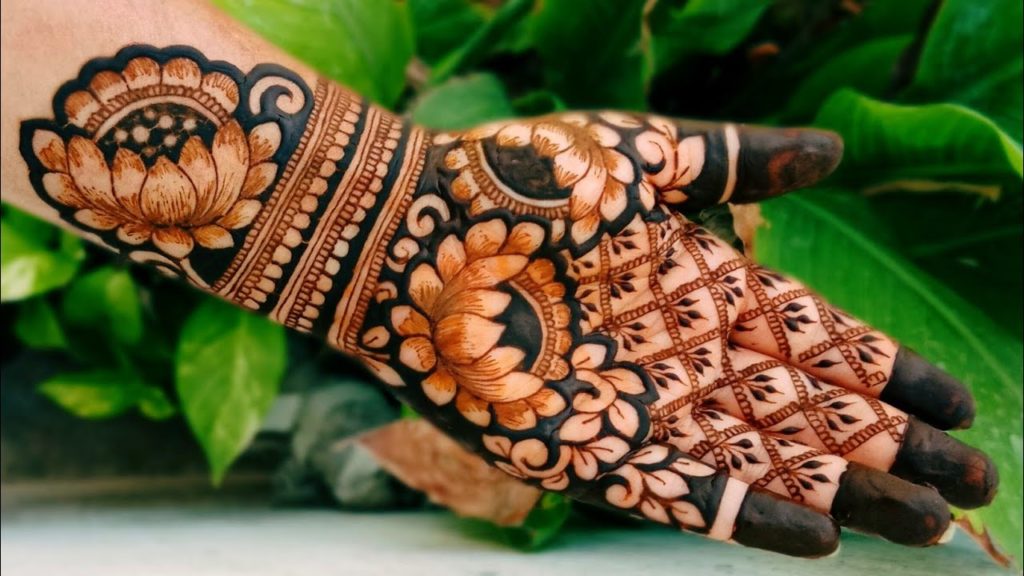
image credit youtube.com
The Minimalistic Lotus Pattern is a design concept that draws inspiration from the lotus flower, a symbol of purity and enlightenment in various cultures, especially in Asia. In this design approach, the lotus is simplified to its essential elements, often featuring clean lines and geometric shapes.
The lotus is typically represented with its petals unfurling, and it is often associated with spiritual and philosophical ideas such as rebirth and enlightenment. The minimalistic interpretation of this motif emphasizes simplicity, elegance, and tranquility. It is commonly used in various art forms, including graphic design, interior decor, and fashion.
8. Glittery Glitz and Glamour Mehndi Design:

image credit thebridalbox.com
“Glittery Glitz and Glamour” is a design theme characterized by opulence, extravagance, and a lavish use of sparkling elements. It is often associated with glamorous events, high-end fashion, and luxury decor. This theme incorporates shiny and reflective materials like sequins, crystals, metallics, and glitter to create a dazzling and eye-catching effect in mehndi.
Whether used in fashion, interior design, or event planning, Glittery Glitz and Glamour aims to create a sense of luxury and indulgence.
9. Diya and Rangoli Inspired Design:

image credit youtube.com
Diya and Rangoli Inspired Design draws inspiration from traditional Indian art forms used during festivals and celebrations. Diyas are small oil lamps, while Rangoli is a colorful, decorative art form created on the ground using colored powders, rice, flower petals, or other materials.
This design concept incorporates elements such as intricate patterns, vibrant colors, and the use of light. Diyas are often used to create warm and inviting atmospheres during festivals like Diwali, symbolizing the triumph of light over darkness. Rangoli patterns, on the other hand, serve as beautiful and temporary decorations that showcase cultural motifs and creativity.
10. Delicate Lace-Like Mehndi Design:
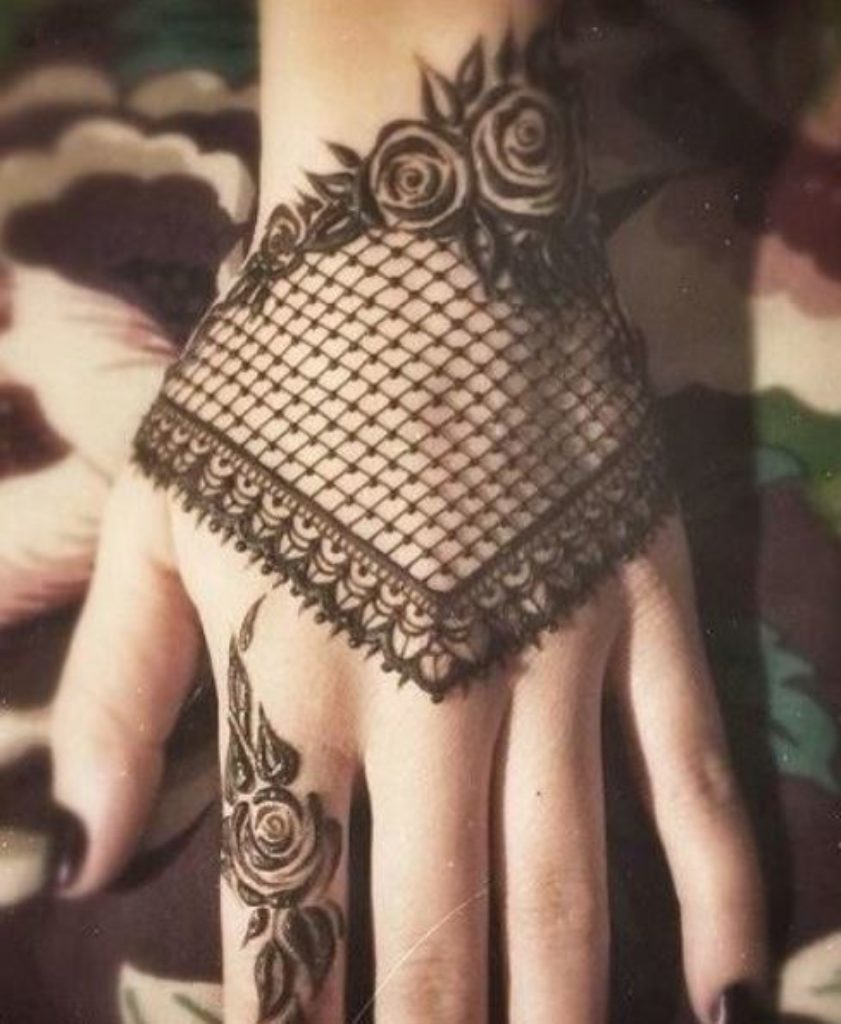
image credit shilpaahuja.com
Delicate Lace-Like Mehndi is a style of applying henna, a natural dye, to create intricate and lace-like patterns on the skin, often on the hands. Mehndi is an integral part of many cultural and religious celebrations, especially in South Asia and the Middle East.
This particular style focuses on fine and intricate designs that resemble lacework. It involves using thin lines, floral motifs, and geometric patterns to create an exquisite and delicate appearance. The result is a temporary tattoo-like design that is both elegant and ornate.
11. Sun and Moon Mehndi Design:
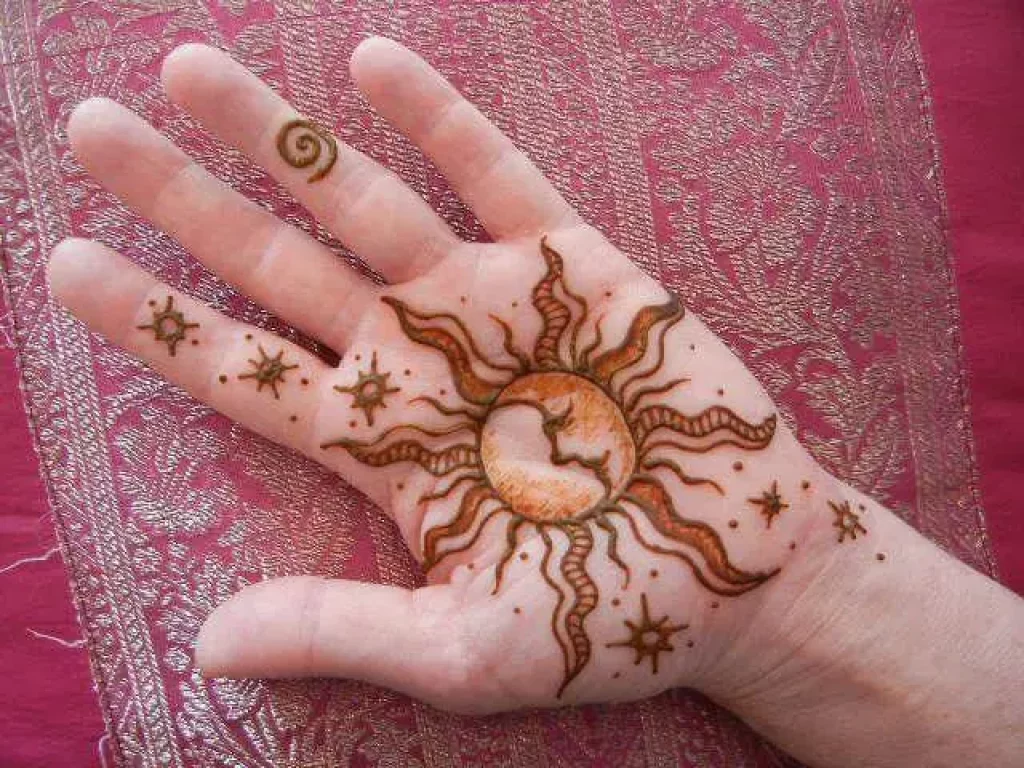
image credit newsbugz.com
A Sun and Moon Mehndi Design for Diwali combines two celestial elements, the sun and the moon, to create a design rich in symbolism and spirituality. The sun represents light, vitality, and energy, while the moon represents serenity, reflection, and the passage of time.
This mehndi design not only celebrates the beauty of celestial bodies but also conveys a deeper message of balance, spirituality, and harmony. Whether worn for a special occasion or simply to connect with the cosmic forces, the Sun and Moon Mehndi Design adds a touch of serenity and depth to your Diwali celebrations.
12. Dazzling Dots and Lines Mehndi design:
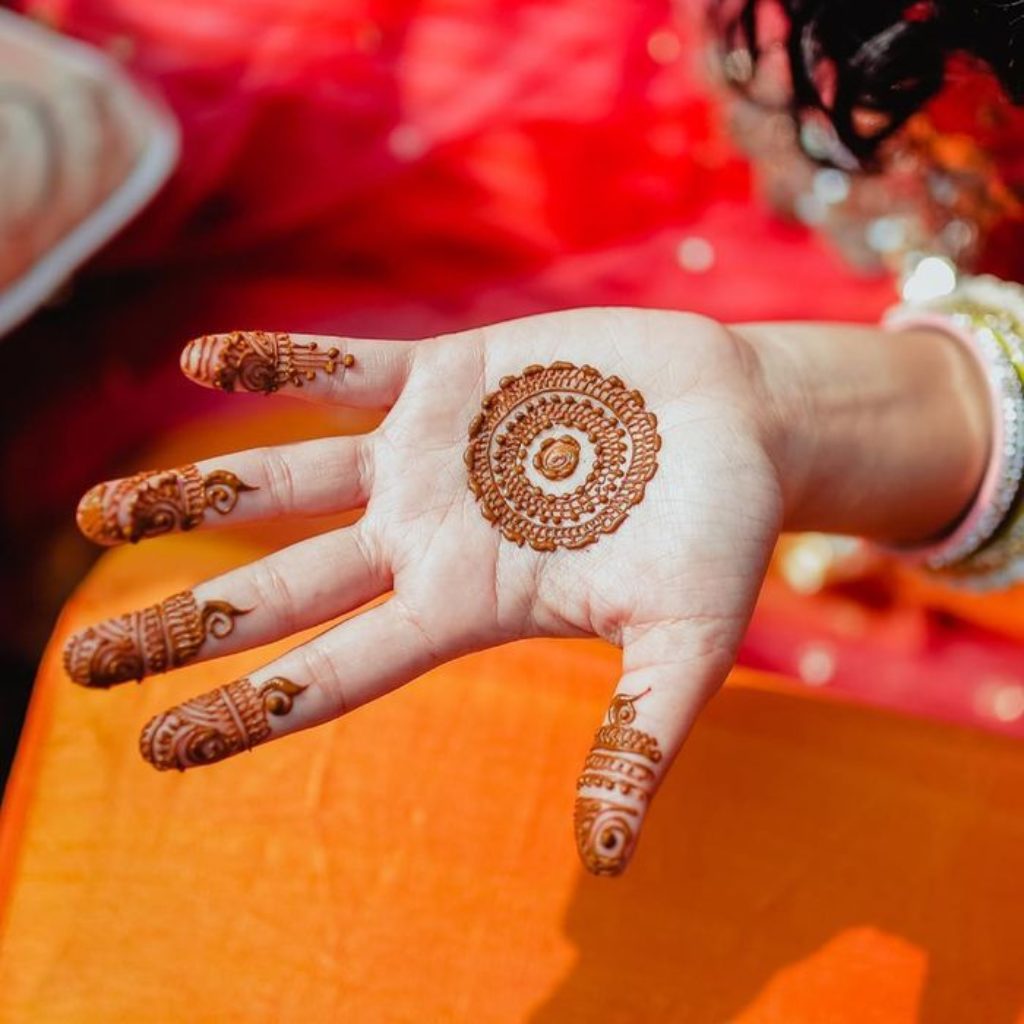
image credit wedmegood.com
Dazzling Dots and Lines Mehndi is all about simplicity with a touch of glamour. This design relies on minimalist yet striking patterns, mainly consisting of dots and lines. The dots can be arranged to create geometric shapes or intricate motifs, while lines are used to connect and highlight these elements. This style is ideal for those who prefer a subtle and modern mehndi look that complements various outfits and occasions. Dazzling Dots and Lines Mehndi is versatile and can be applied quickly, making it a popular choice for festivals, casual gatherings, and even everyday adornment.
13. Diwali Fireworks Mehndi Design:
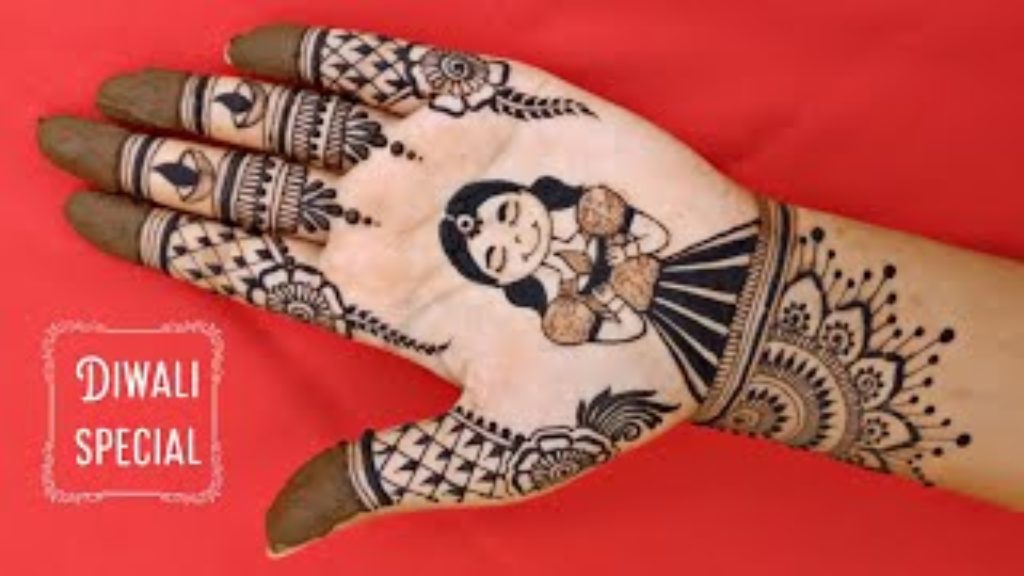
image credit youtube.com
A Diwali fireworks mehndi design is a captivating and celebratory henna pattern inspired by the dazzling fireworks displays that light up the night sky during the Diwali festival. This design typically adorns the hands or arms and serves as a reflection of the joy, brightness, and excitement that Diwali brings.
A Diwali fireworks mehndi design is perfect for the Diwali festival, whether you’re attending gatherings, participating in religious ceremonies, or simply reveling in the beauty and symbolism of the holiday.
14. Ganesha and Om Symbols Mehndi Design:
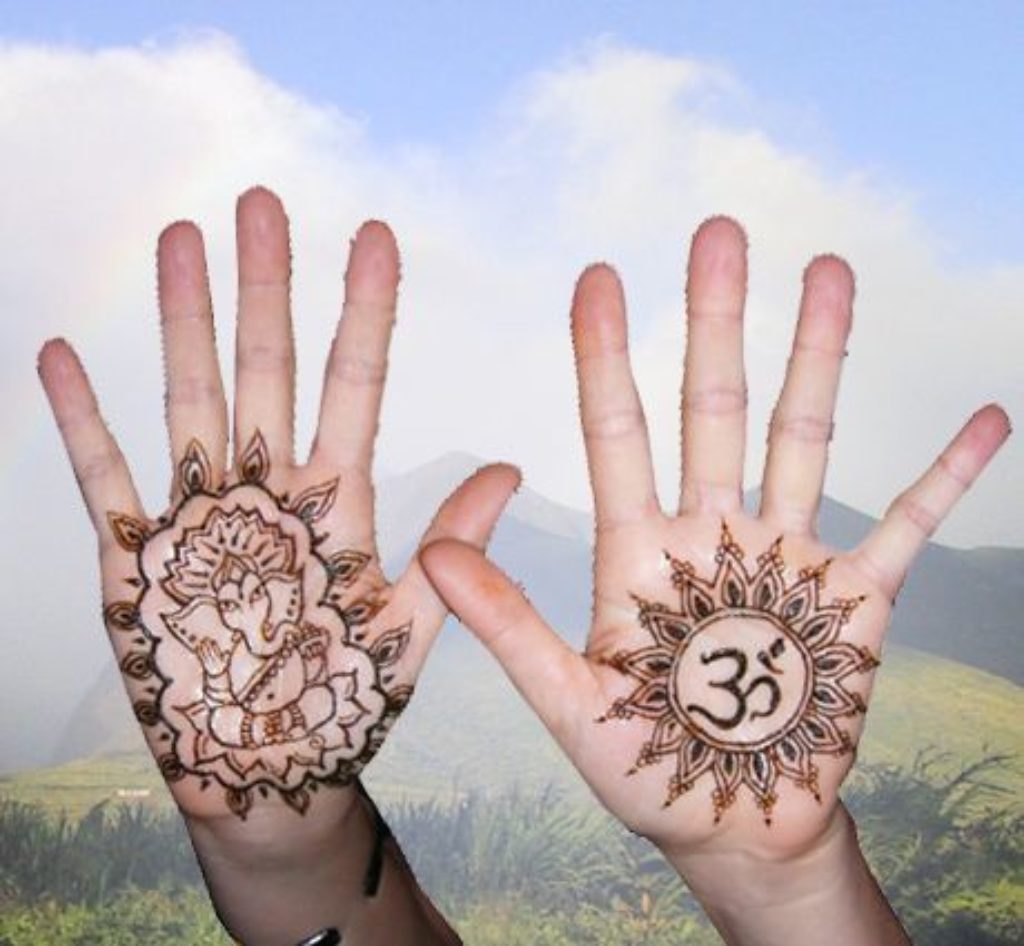
image credit pinterest.com
Ganesha and Om Symbols are significant elements in Hindu culture and spirituality. In mehndi design, these symbols are often incorporated to bring blessings, protection, and spiritual significance to the wearer. Lord Ganesha, the elephant-headed deity, is known as the remover of obstacles and is associated with auspicious beginnings. The Om symbol represents the ultimate reality, consciousness, and the essence of the universe. When used in mehndi, these symbols are beautifully integrated into intricate patterns, often on the palms or the back of the hand, creating a harmonious blend of art and spirituality. This style is popular not only for religious and cultural occasions but also for those seeking a meaningful and spiritually inspired mehndi design.
15. Contemporary Fusion Mehndi Design:
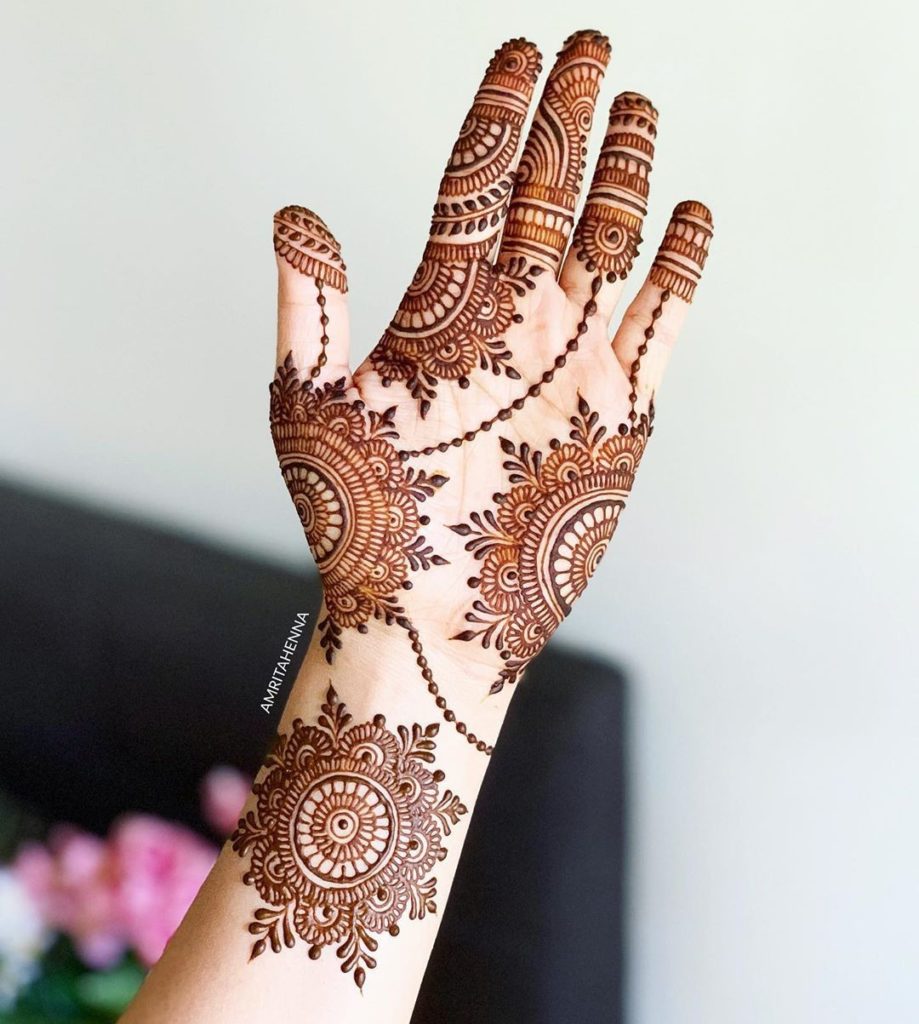
image credit blingsparkle.com
Contemporary Fusion Mehndi is a dynamic and creative approach that combines traditional Mehndi art with contemporary elements. Contemporary Fusion Mehndi is a reflection of individuality and personal style, making it perfect for those who want a Mehndi design that stands out and tells a unique story. It’s a popular choice for modern brides looking to infuse their mehndi with a touch of personal flair or for anyone wanting to embrace mehndi as a form of artistic expression beyond tradition.
16. Bangles and Bracelets Mehndi Design:
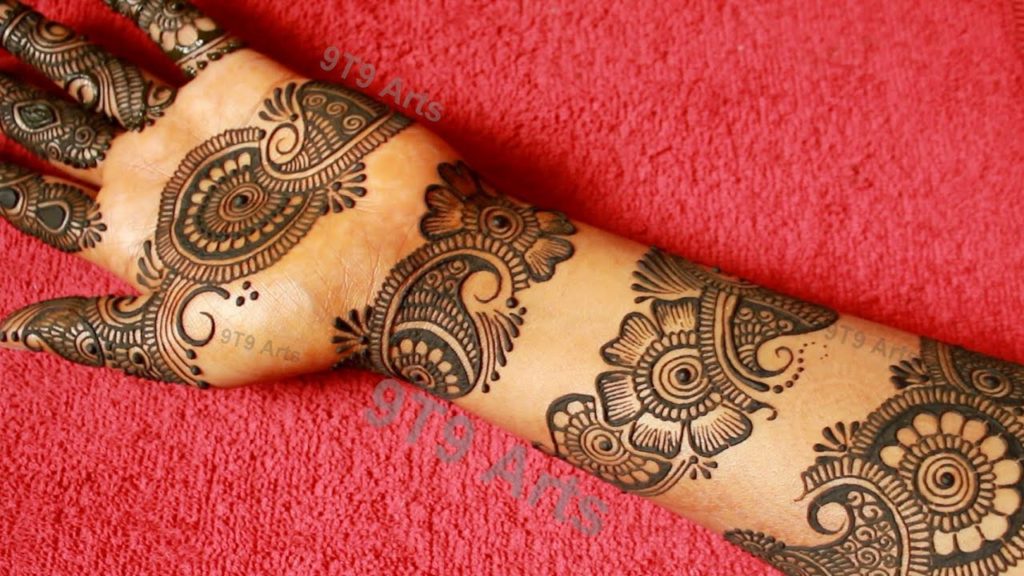
image credit youtube.com
A Bangles and Bracelets Mehndi Design is a beautiful and intricate henna pattern that mimics the appearance of traditional Indian bangles and bracelets on the wrists. This design is a popular choice for those who want to adorn their hands with the elegance of jewelry without wearing actual accessories.
This mehndi design allows you to showcase the beauty of traditional Indian jewelry in a temporary and artistic form. It’s a striking way to adorn your wrists and hands, making a statement that combines cultural significance with aesthetic charm.
17. Swastika Motif Mehndi Design:
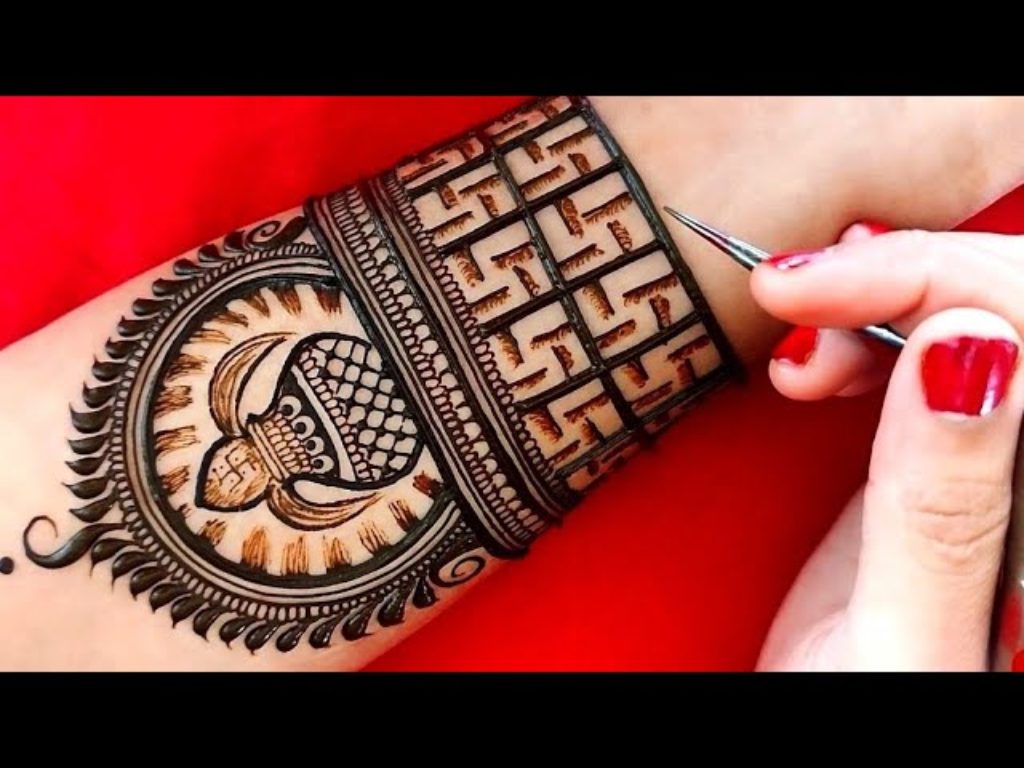
image credit youtube.com
A Swastika Motif Mehndi Design incorporates the auspicious swastika symbol into a henna pattern. The swastika is a sacred symbol in Hinduism, Buddhism, and Jainism, representing well-being, prosperity, and good luck. When used in mehndi designs, it adds a spiritual and traditional touch.
This mehndi design is a beautiful way to combine tradition, spirituality, and artistry. It not only adds a touch of cultural significance to your appearance but also serves as a symbol of positivity and auspiciousness.
18. Kalash and Coconut Mehndi Design:
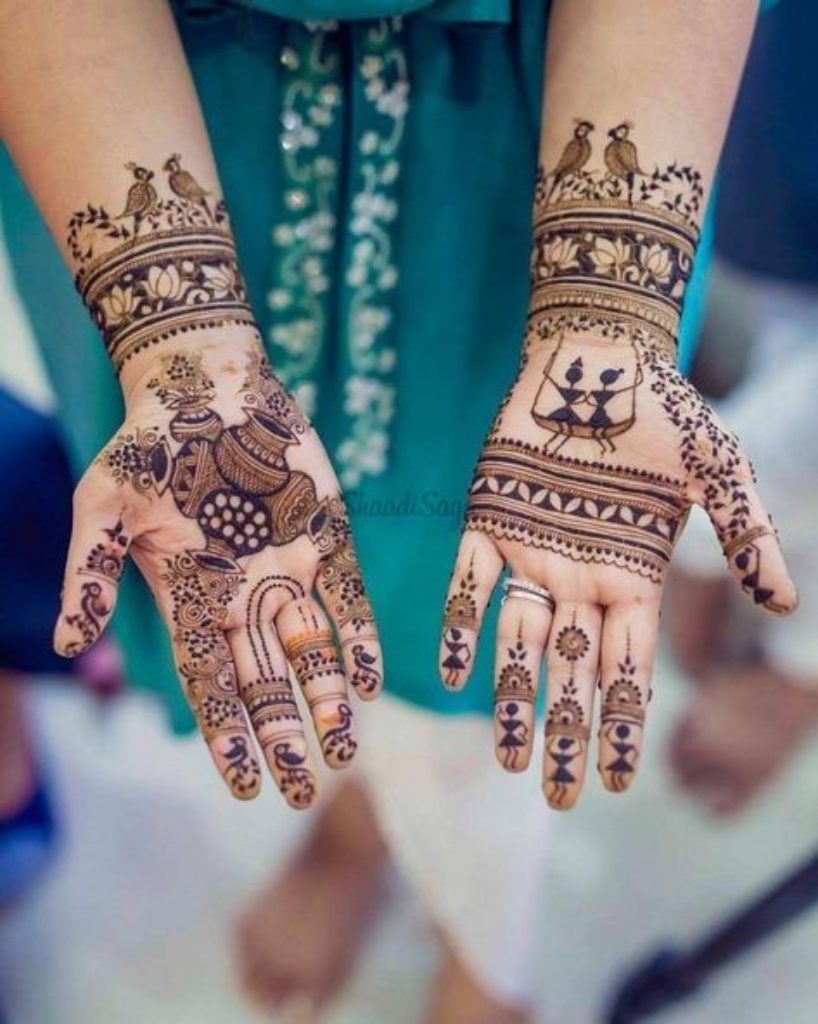
image credit in.pinterest.com
A Kalash and Coconut Mehndi Design is a beautiful and meaningful henna pattern that features the symbolic representation of a Kalash (pot) and a coconut. In Hindu culture, the Kalash is considered highly auspicious and signifies abundance and purity, while the coconut represents fertility, sustenance, and prosperity. Combining these elements in a mehndi design adds a traditional and spiritual touch.
This mehndi design is a beautiful way to celebrate cultural and spiritual significance. It not only adds a touch of tradition to your appearance but also serves as a symbol of purity, abundance, and blessings.
19. Abstract Patterns Mehndi Design:
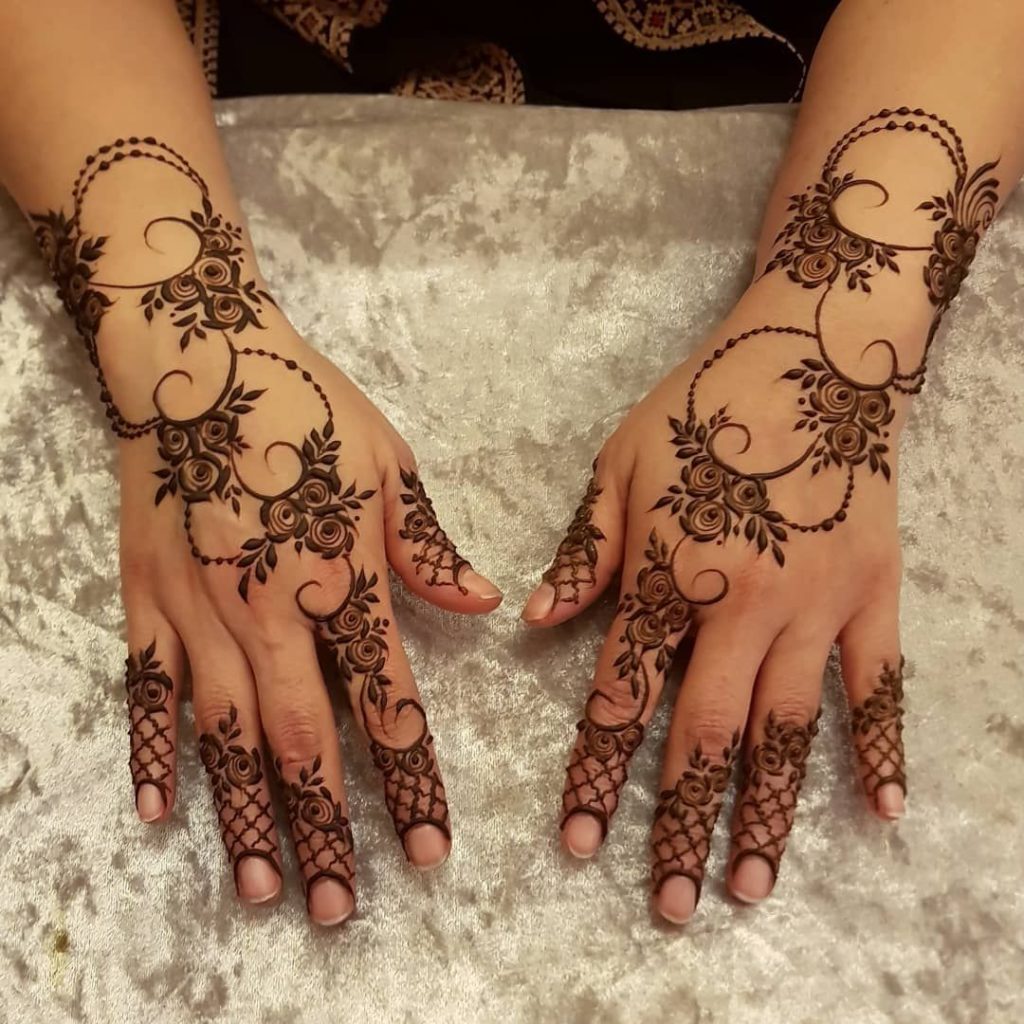
image credit in.pinterest.com
An Abstract Patterns Mehndi Design for Diwali offers a creative and contemporary twist on traditional henna art. This style of mehndi allows for artistic freedom, allowing you to experiment with various abstract shapes, lines, and patterns.
This mehndi design allows you to break away from traditional motifs and embrace a more contemporary and artistic approach. It’s an excellent choice if you want to stand out and make a unique statement during Diwali celebrations.
20. Festive Bells and Swirls Mehndi Design:
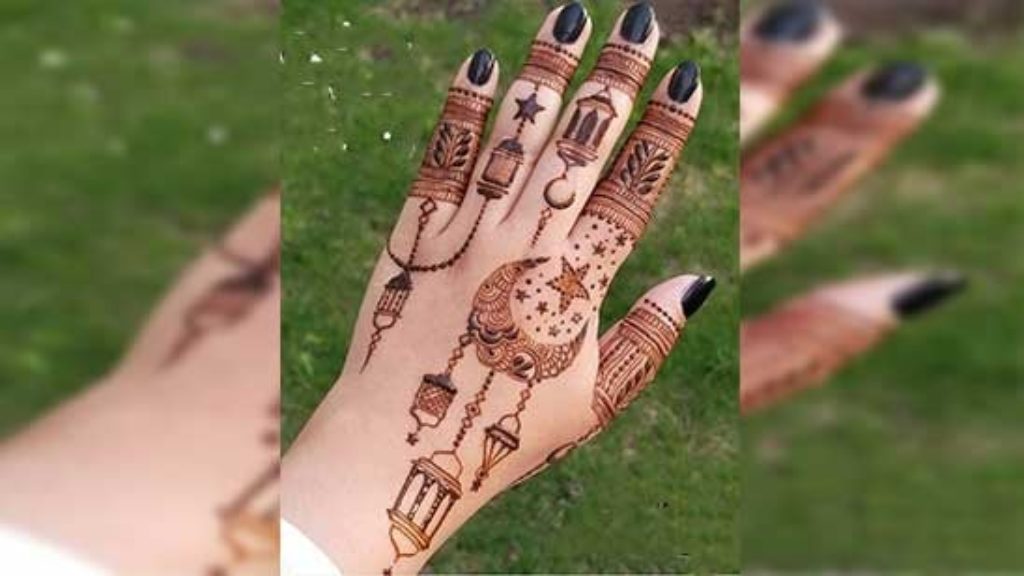
image credit tailoringinhindi.com
Festive bells and swirls are a joyful and celebratory motif often used in holiday and festive decorations. Bells symbolize merriment and announcement, while swirls add a sense of movement and excitement. This motif is commonly seen in holiday ornaments, gift wraps, and party decorations.
The design typically features whimsical and vibrant patterns, with bells adorned with ribbons and swirls that convey a sense of energy and festivity. The combination of bells and swirls creates a visual representation of the excitement and joy that come with celebrations and special occasions.
Front hand mehndi designs are more than just a form of body decoration; they are a cultural and artistic expression of the joy and spirituality associated with Diwali. These designs not only enhance the beauty of one’s hands but also carry with them the rich traditions and symbolism of the festival. They are a way to celebrate the spirit of Diwali and express one’s creativity while enjoying the therapeutic benefits of the process. So, this Diwali, consider adorning your front hands with beautiful mehndi designs to fully immerse yourself in the festive atmosphere.


